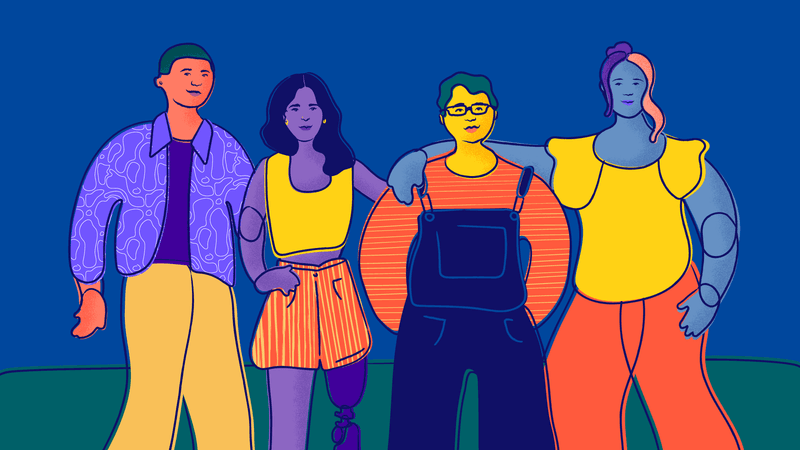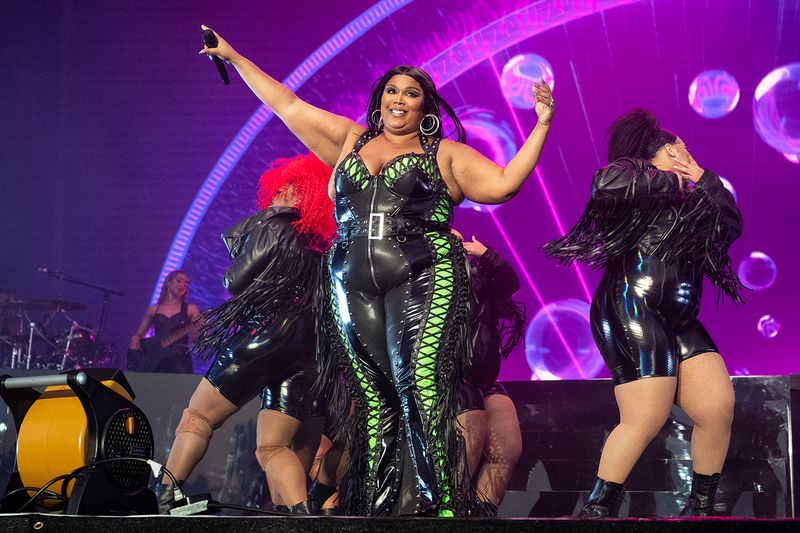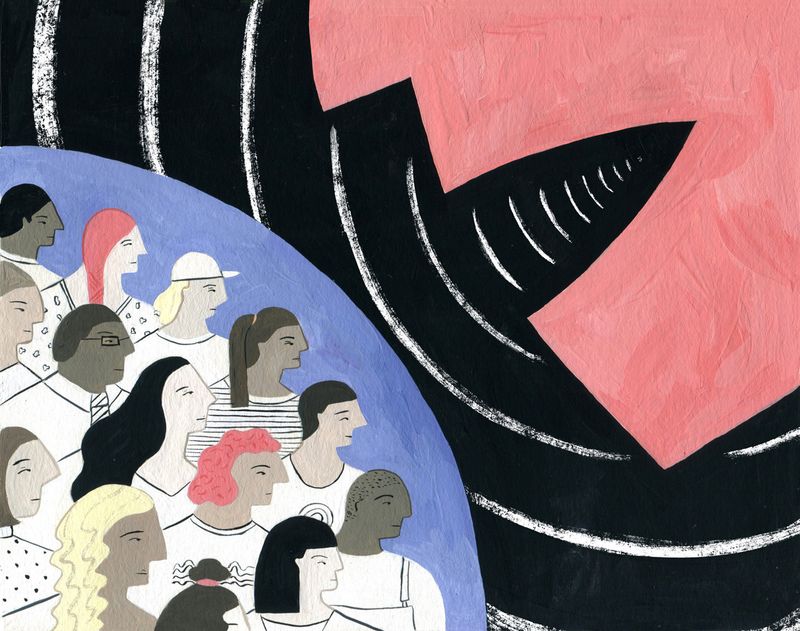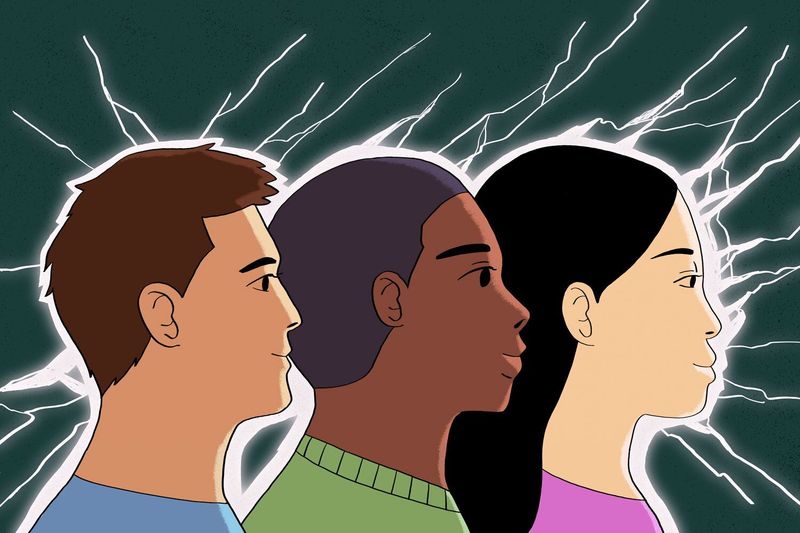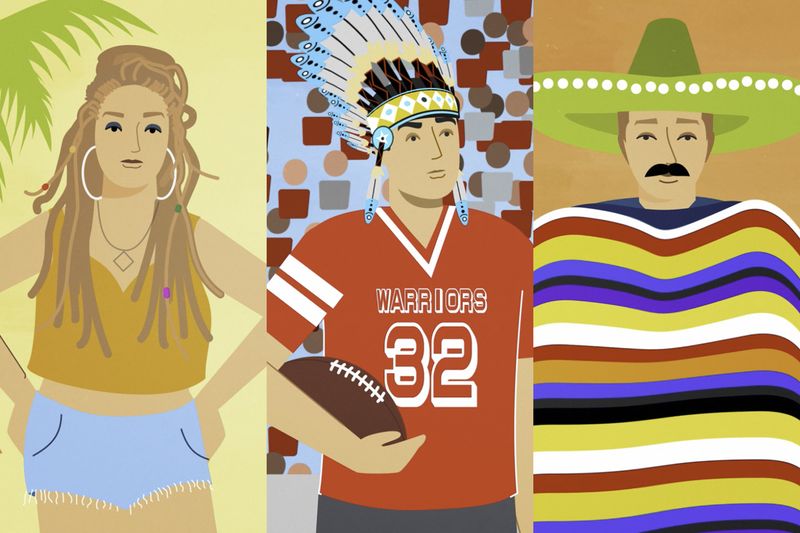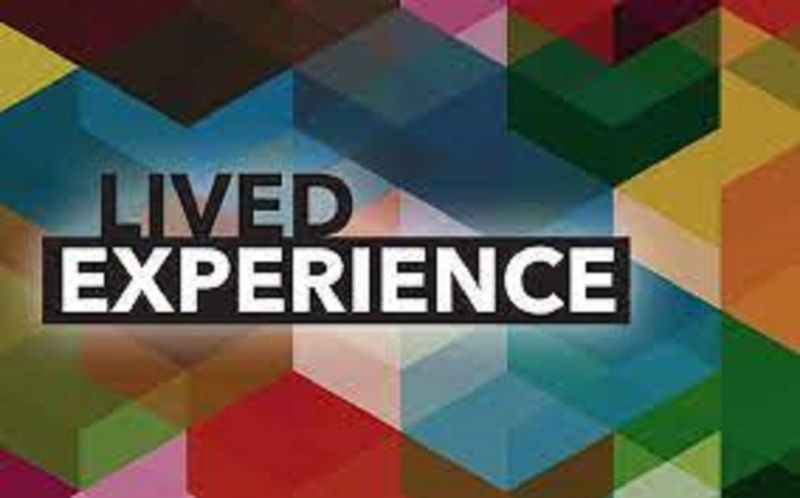Language evolves with each generation, often leading to a clash of words between the young and the old. This blog post explores the ‘woke’ terms that often irritate Boomers and contrasts them with the classic phrases they prefer.
With 33 terms in total, it highlights the cultural and generational divide between modern terminology and traditional expressions.
1. Triggered
Have you ever felt someone overreacting to a minor inconvenience? The term ‘triggered’ captures this perfectly. Popular among younger generations, ‘triggered’ describes a strong emotional response to a perceived slight or stressful event. While it’s often used in jest, Boomers may find it exaggerated.
To them, it sometimes seems like an unnecessary dramatization of everyday occurrences. In a world where resilience was once key, the notion of being easily ‘triggered’ can be perplexing. The term signifies a shift towards a more open acknowledgment of emotional responses, which isn’t always appreciated by older generations.
2. Microaggression
Imagine a comment or action that unintentionally offends someone. Welcome to the world of microaggressions. These are subtle, often unintentional, remarks or actions that highlight prejudice against marginalized groups. For Boomers, who grew up in a less politically correct era, this concept may feel foreign or overly sensitive.
In today’s society, recognizing microaggressions is considered crucial for fostering inclusivity. Yet, the older generation might view this as an overemphasis on political correctness. These seemingly small incidents can accumulate, highlighting the changing landscape of social awareness.
3. Toxic Masculinity
Toxic masculinity refers to cultural norms that dictate how men should behave, often to the detriment of expressing emotions. This concept questions the traditional male stereotype of stoicism and dominance, advocating for a healthier, more expressive masculinity.
Boomers, who were raised with distinct gender roles, might see this term as an attack on traditional values. The challenge lies in reconciling past norms with evolving ideas about gender. Emphasizing vulnerability and emotional honesty, toxic masculinity is a term that symbolizes a shift towards more inclusive male identities.
4. Cancel Culture
Cancel culture is a social phenomenon where individuals or entities face boycotts or public shaming, often through social media, for actions considered objectionable. This modern form of accountability can be swift and unforgiving.
For Boomers, this concept can seem like an overreaction, bypassing due process and second chances. Raised in an era valuing redemption and learning from mistakes, they might view cancel culture as hasty and overly punitive. The rise of digital platforms has amplified this trend, showcasing the power and peril of online voices.
5. Cisgender
Cisgender is a term used to describe individuals whose gender identity matches the sex they were assigned at birth. This categorization aims to normalize diverse gender identities by providing a counterpart to transgender.
For Boomers, accustomed to a binary understanding of gender, the introduction of such terminology can be perplexing. It reflects a broader societal move towards inclusivity and recognition of identity complexity. As conversations around gender become more nuanced, terms like cisgender challenge traditional viewpoints, fostering a dialogue on identity and acceptance.
6. Latinx
Latinx is a gender-neutral term used to describe people of Latin American descent, avoiding the gender-specific ‘Latino’ or ‘Latina’. This inclusive language seeks to embrace non-binary and gender-fluid identities within the community.
For Boomers, who may be more familiar with traditional gendered language, Latinx might seem unnecessary or unfamiliar. The term underscores a cultural shift towards recognizing and respecting gender diversity. As the language evolves, it reflects broader societal changes, prompting conversations about identity and acceptance in the Latin community.
7. Body Positivity
Body positivity advocates for the acceptance of all body types, challenging societal beauty standards. Emphasizing self-love and diversity, it encourages individuals to embrace their natural appearance without shame.
Boomers, who grew up with rigid beauty ideals, might find this movement refreshing yet challenging. The focus on self-acceptance and rejecting unrealistic standards represents a significant cultural shift. Encouraging a broader definition of beauty, body positivity promotes mental well-being and self-confidence, reshaping perceptions across generations.
8. Safe Space
Safe spaces are environments where individuals can express themselves without fear of judgment or harm. Often found in educational settings, they aim to support marginalized groups by providing comfort and acceptance.
For Boomers, the idea of shielding oneself from opposing views can seem counterintuitive to resilience. Raised in a world that encouraged toughening up, they might view safe spaces as coddling. Yet, creating such environments is crucial for fostering dialogue and understanding, highlighting a generational divide in approaches to emotional well-being.
9. Emotional Labor
Emotional labor refers to the often unnoticed effort of managing emotions, particularly in caregiving roles or customer service. It highlights the mental and emotional toll of maintaining harmony and addressing others’ needs.
Boomers, who experienced traditional work environments, may see this as part of everyday responsibilities. However, recognizing emotional labor is vital for equitable gender roles and workplace fairness. By naming this invisible work, the term sheds light on personal sacrifices often overlooked, sparking conversations about balance and recognition.
10. Non-binary
Non-binary is an identity that doesn’t fit within the traditional male-female gender binary. It challenges conventional understandings of gender, advocating for recognition beyond male and female categories.
For Boomers, raised with binary gender concepts, this identity may seem unfamiliar. However, it signifies a broader acceptance of diverse identities, encouraging inclusivity and understanding. As society evolves, the recognition of non-binary individuals fosters acceptance and dialogue across generations, bridging gaps in understanding and empathy.
11. Allyship
Allyship involves actively supporting marginalized groups by standing up against injustices and promoting equality. It emphasizes solidarity with those facing discrimination, advocating for positive social change.
For Boomers, the formalization of such support might seem new, as solidarity was often informal. However, allyship highlights the importance of being proactive in fostering inclusivity. By educating oneself and others, it creates pathways for understanding and cooperation, bridging generational and cultural divides for a more equitable society.
12. BIPOC
BIPOC stands for Black, Indigenous, and People of Color, a term acknowledging the unique experiences and struggles of these groups. It emphasizes the importance of intersectionality in discussions about race and inclusion.
Boomers, who may be less familiar with nuanced racial terminology, might find this acronym complex. Yet, it underscores the need for recognizing diverse identities and their distinct challenges. BIPOC fosters inclusive dialogues, encouraging awareness and action towards racial justice, bridging understanding across generations.
13. Gaslighting
Gaslighting involves manipulating someone into doubting their reality or sanity, often used in abusive relationships. The term gained prominence in recent years, highlighting psychological abuse.
For Boomers, familiar with straightforward communication, gaslighting may seem like an extreme label. However, recognizing such manipulation is crucial for mental health and self-awareness. The term draws attention to subtle forms of abuse, encouraging open discussions about emotional well-being and support across generations.
14. DEI (Diversity, Equity, Inclusion)
DEI stands for Diversity, Equity, and Inclusion, three pillars for fostering a fair and diverse environment. These principles aim to create workplaces and communities where everyone feels welcome and valued.
Boomers, who experienced different work cultures, might view DEI as a buzzword. Yet, it represents a commitment to fairness and representation, vital for modern progress. As organizations prioritize DEI, it fosters understanding and acceptance, bridging generational gaps for a more harmonious society.
15. Gender Fluid
Gender fluidity is the concept of moving between gender identities, challenging fixed gender roles. It embraces the flexibility of identity, allowing individuals to express themselves authentically.
For Boomers, accustomed to clear gender distinctions, this fluidity might seem perplexing. However, it reflects a broader acceptance of diverse identities, fostering conversations about self-expression and understanding. By embracing gender fluidity, society moves towards a more inclusive future that respects individuality and personal journeys.
16. Cultural Appropriation
Cultural appropriation involves adopting elements of a culture, often without understanding or respecting its significance. It raises discussions about respect, representation, and consent in cultural exchanges.
For Boomers, who experienced less cultural sensitivity, this concept may seem restrictive. Yet, it calls for thoughtful engagement and appreciation of diverse cultures. Highlighting the importance of context and respect, cultural appropriation encourages dialogues about ownership, identity, and authenticity across generations.
17. Privilege Check
Checking one’s privilege involves recognizing advantages one holds in society, often unearned. It encourages empathy and understanding by highlighting systemic inequalities.
For Boomers, who may view success as solely merit-based, this concept might feel challenging. However, acknowledging privilege fosters inclusivity and social justice, encouraging collective responsibility for change. By understanding privilege, individuals can advocate for fairness and equity, bridging generational and cultural gaps.
18. Lived Experience
Lived experience refers to personal knowledge gained through direct involvement in life events. It values personal narratives as vital for understanding and empathy.
Boomers, who often prioritized traditional expertise, might find this focus on personal stories intriguing. However, lived experience enriches perspectives, fostering connections across diverse backgrounds. By valuing personal insights, society embraces a more comprehensive understanding of issues, bridging generational perspectives.
19. Intersectionality
Intersectionality examines how various social identities intersect, influencing experiences and opportunities. It highlights the complexity of discrimination and privilege.
For Boomers, unfamiliar with nuanced social theory, intersectionality might seem complex. Yet, it offers a framework for understanding interconnected systems of oppression. By recognizing these intersections, society can address inequalities more effectively, fostering a more equitable future.
20. Social Construct
Social constructs are ideas or perceptions shaped by society, affecting how we perceive reality. They highlight the power of collective beliefs in shaping norms and behaviors.
For Boomers, who experienced more rigid social systems, the fluidity of social constructs might seem novel. However, recognizing these constructs empowers individuals to challenge norms and create change. By understanding the societal influences on perception, society can foster progress and inclusivity.
1. Pull yourself up by your bootstraps
‘Pull yourself up by your bootstraps’ emphasizes self-reliance and determination. It reflects a belief in individual effort and resilience as keys to success.
For Boomers, this phrase encapsulates the spirit of perseverance and personal responsibility. Raised in an era valuing hard work, they might see this as foundational to achievement. However, the complexity of modern challenges calls for collective support, prompting discussions about balance between self-reliance and community.
2. Boys will be boys
‘Boys will be boys’ excuses certain behaviors as inherent to male identity. It reflects traditional gender norms, often overlooking accountability.
For Boomers, this phrase normalizes male behavior, yet it faces criticism for perpetuating stereotypes. The conversation about gender expectations evolves, challenging such notions. By redefining accountability and behavior, society moves towards more equitable gender roles and understanding.
3. It is what it is
‘It is what it is’ embodies acceptance and resignation to circumstances. It reflects a practical approach to life’s unpredictability.
For Boomers, this phrase offers comfort in embracing reality without resistance. It signifies maturity in facing life’s challenges with grace. However, younger generations may see it as passive, preferring proactive solutions. The balance between acceptance and action reflects generational attitudes towards problem-solving.
4. Make America great again
‘Make America great again’ evokes nostalgia for perceived past glory, often associated with traditional values and national pride.
For Boomers, this phrase resonates with memories of a prosperous era, emphasizing strength and unity. It captures a longing for simplicity and stability. However, it also faces criticism for overlooking historical complexities and progress. The phrase sparks conversations about national identity and change across generations.
5. Hard work never hurt anyone
‘Hard work never hurt anyone’ champions the virtues of diligence and effort. It underscores the belief that labor leads to success and fulfillment.
For Boomers, this phrase embodies a work ethic rooted in perseverance and dedication. It reflects an era where hard work was synonymous with achievement. However, modern discussions about work-life balance challenge this notion, advocating for well-being alongside productivity. The dialogue about work’s role in life bridges generational perspectives.
6. That’s just the way it is
‘That’s just the way it is’ reflects acceptance of life’s unchangeable aspects. It embodies wisdom in acknowledging limitations and realities.
For Boomers, this phrase offers solace in embracing what cannot be altered. It signifies maturity in understanding life’s complexities. However, younger generations, focused on change and innovation, might challenge this acceptance. The balance between acceptance and ambition reflects generational views on progress and stability.
7. Keep it simple
‘Keep it simple’ advocates for straightforwardness and clarity. It emphasizes the beauty of simplicity in an increasingly complex world.
For Boomers, this phrase resonates with minimalist values, focusing on essentials and avoiding unnecessary complications. It offers comfort in clarity and focus. However, in a fast-paced, technology-driven society, simplicity can be elusive. The balance between simplicity and complexity reflects generational approaches to life and decision-making.
8. If it ain’t broke, don’t fix it
‘If it ain’t broke, don’t fix it’ champions reliability and caution in change. It warns against unnecessary meddling with functional systems.
For Boomers, this phrase underscores the value of stability and trust in proven methods. It reflects a preference for consistency over change. However, younger generations, driven by innovation, may challenge this conservatism, advocating for improvement and risk-taking. The dialogue between stability and progress bridges generational perspectives.
9. Common sense
‘Common sense’ emphasizes practical judgment based on everyday knowledge. It reflects a reliance on intuition and experience over complex theories.
For Boomers, this phrase highlights the value of straightforward reasoning and traditional wisdom. It offers guidance in navigating life’s challenges with simplicity and insight. However, in a world of evolving complexities, common sense may sometimes seem insufficient. The balance between instinct and expertise reflects generational approaches to understanding and decision-making.
10. There’s no free lunch
‘There’s no free lunch’ conveys the idea that nothing comes without a cost or effort. It reflects a belief in meritocracy and personal responsibility.
For Boomers, this phrase underscores the importance of effort and contribution for success. It emphasizes the value of earning one’s keep in a competitive world. However, modern discussions about systemic barriers and privilege challenge this notion, advocating for equity alongside merit. The dialogue about opportunity and fairness bridges generational perspectives.
11. Back in my day
‘Back in my day’ evokes nostalgia for simpler times, often reflecting on perceived values and traditions of the past.
For Boomers, this phrase offers a way to connect with younger generations, sharing wisdom and experiences. It embodies a longing for perceived stability and clarity. However, younger generations might see it as out of touch with present realities. The balance between nostalgia and progress reflects generational dialogues about change and continuity.
12. You can’t say anything anymore
‘You can’t say anything anymore’ reflects frustration with perceived restrictions on speech due to political correctness. It highlights tensions between free expression and sensitivity.
For Boomers, this phrase captures a sense of loss over freer dialogues of the past. It reflects concerns about navigating modern communication norms. However, it also sparks conversations about respect and inclusivity in discourse. The balance between freedom and sensitivity reflects generational perspectives on communication and respect.
13. Respect your elders
‘Respect your elders’ emphasizes the importance of valuing and honoring older generations. It reflects a tradition of wisdom and reverence for experience.
For Boomers, this phrase underscores the significance of learning from those who came before. It advocates for intergenerational respect and understanding. However, younger generations may challenge authority, advocating for mutual respect across ages. The dialogue about respect and authority bridges generational values and understanding.





